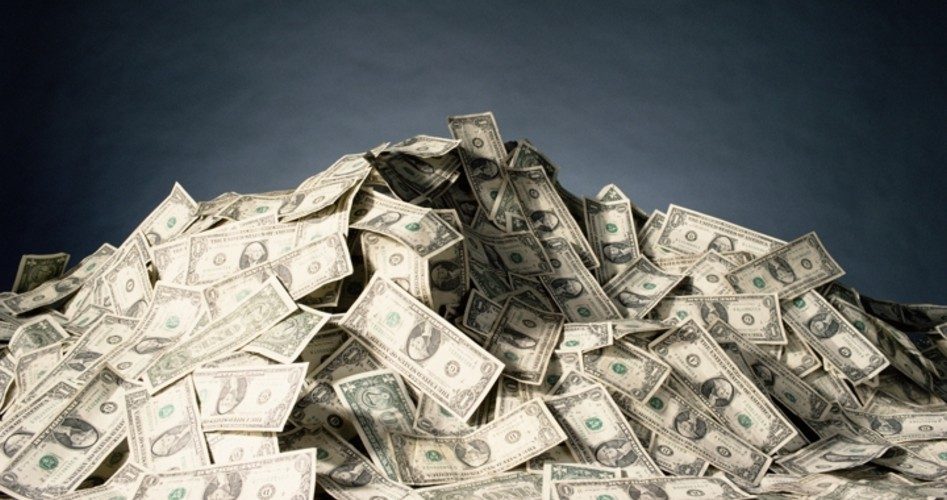
Wall Street investors have started pouring billions into the energy sector, persuaded that prices not only of crude oil but stocks of energy companies have hit bottom. They just might be premature.
Pioneer Natural Resources has sold $1.6 billion in new stock since the first of the year, while Devon Energy has sold $1.5 billion. Hess Corporation and Marathon Oil have each enjoyed an influx of $1.1 billion of new capital since December while others, including Cabot Oil & Gas, Newfield Exploration, and Energen Corporation, are enjoying the ride as well. Since January 1, $8.97 billion in new capital has poured into the U.S. energy sector.
In February alone, more new capital has flowed into the energy sector than at any time in history and there appears to be no letup.
That the bottom has been hit is based upon two assumptions, both of which are questionable: Supply is diminishing and demand is increasing. But supply isn’t diminishing, at least in any significant manner. Although rig counts are down near record lows, production from those remaining active is barely off their highs. The Energy Information Administration (EIA) has estimated that oil shale production this year will be just two percent below last year’s, thanks to increasing efficiency and improving technology squeezing more production out of those rigs still operating. With Iran just announcing that it will start exporting refined oil products early this summer, supplies will remain abundant for the foreseeable future.
The other side of the equation is also in question, especially in light of the latest news from China and Japan. Reuters just announced that China’s February trade performance “was far worse than economists had expected, with exports tumbling the most in over six years … [just] days after top [Chinese] officials sought to reassure investors that [China’s] outlook … remains solid.”
China’s exports fell a breathtaking 25.4 percent in February compared to a year earlier, with demand slumping across every sector. Imports fell, too, by 13.8 percent, the 16th straight monthly decline.
Japan is teetering on the edge of another recession as its economy contracted further despite heroic efforts by the country’s central bank to goose the economy with billions more of digital currency.
Earnings improvements necessary to justify the rebound simply aren’t there. Rolling 12-month forward earnings expectations across the globe are universally off their highs.
Observers aren’t buying the rebound as anything more than a head fake. In its note to clients on Monday, Goldman Sachs called the rebound a “premature surge” and a “false start” while other observers are saying it is a mirage, “premature” and “not sustainable.”
The real reason for the rebound, according to MacroMan, is short covering. Those who have made bets on further declines have gotten caught in this rising market and many have decided to end the pain by buying back stock they sold earlier. As he noted, “In some ways … it seems that the worse your fundamentals are, the better your price performance has been. That is a classic, if not the classic, symptom of short covering.”
There’s also an unsettling similarity to the head fake a year ago when crude prices jumped in March and April from $55 a barrel to $65, and then declined to below $30 instead of moving still higher. Morgan Stanley looked at the history and wrote, “The rebound oil has enjoyed since early February bears an uncanny resemblance to [the] rally seen in the second quarter of 2015 that ultimately faltered.”
The influx of new capital is allowing energy producers to shore up their balance sheets and put aside some reserves to wait for the real bottom sometime in the future. It will also offset some of the pressure from banks who shortly will be recalculating reserves backing up the billions in loans they have made in the energy sector. All of which bodes well for the industry as a whole to weather the downturn and wait for the true bottom that some, including the EIA, are predicting won’t be seen for months and perhaps even years.
A graduate of an Ivy League school and a former investment advisor, Bob is a regular contributor to The New American magazine and blogs frequently at LightFromTheRight.com, primarily on economics and politics. He can be reached at [email protected].



